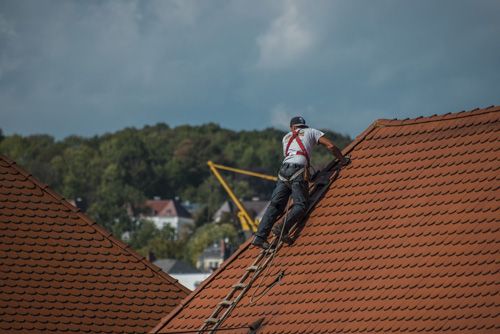 Falls from a height are the second biggest cause of fatal accidents at work, leading to the deaths of 25 people last year (HSE). By its very nature, the roofing and cladding industry will always involve working at a height, which is why we all have an important role to play when it comes to preventing these needless tragedies.
Falls from a height are the second biggest cause of fatal accidents at work, leading to the deaths of 25 people last year (HSE). By its very nature, the roofing and cladding industry will always involve working at a height, which is why we all have an important role to play when it comes to preventing these needless tragedies.
In this article, I’ve shared the basic safety rules you need to know for working at height, including the regulations you need to follow, how you can reduce the risk of a fall, and the training and personal protective equipment (PPE) you should provide for your staff. Keep reading to learn the essential safety protocols that all employers and managers should know.
What is working at height? Know the law
Under UK law, ‘work at height’ is defined as any job where there’s a risk of a fall that could result in an accident or injury. Any work of this sort is covered by the Work at Height Regulations (2005), which dictates what employers should do to safeguard their staff during dangerous jobs.
It’s a common misconception that work at a height only applies to jobs carried out on very tall buildings or ladders, but there are actually other forms of work which are also covered by these regulations. The regulations also apply to any task where there is a risk of:
- Falling through a fragile or unstable surface
- Falling into an exposed opening on the floor
- Falling into holes in the ground
There’s no set height for when the regulations should come into force. Instead, the regulations apply to any work that’s carried out at a height that could cause an injury. It’s therefore necessary for you to use your judgement when deciding whether the WAHR will apply to a particular task.
Provide staff with proper training and equipment
One of the best ways to safeguard your employees is to provide PPE that will reduce the risk of a fall. The WAHR don’t specify exactly what PPE you need to provide, so it’s up to you to use your common sense when deciding which equipment is needed to safeguard your employees on the job.
During roofing work, a harness or fall arrest system can be an essential piece of PPE, especially during work on pitched or sloping roofs where slips are more likely, or during work on very tall buildings. All equipment should undergo an inspection to ensure it is fit-for-purpose before use. That includes larger pieces of collective protection, like scaffolding, as well as any individual safety equipment, like harnesses, ropes or winches.
The HSE regulations also state that all equipment (including ladders) should only ever be used by competent employees, so you’ll need to make sure that you have a thorough training program in place. To be considered competent, your employees will need to understand how to use equipment safely, know how to spot faults or signs of damage, and who to report these to should they notice something amiss.
Do everything possible to reduce risks
By far the simplest way to minimise the risk of a fall is to avoid working at height unless it’s absolutely necessary. While this isn’t always going to be possible in an industry like roofing and cladding, it’s still worth seeking an alternative whenever you can. For instance, there may be an extendable tool you could use to remove the need for a ladder or scaffolding, or you may be able to perform certain assembly tasks at ground-level and then transport them to the roof to lessen the time spent at height.
If you can’t avoid working at height, then you should make sure that there’s some form of collective protection in place. This might involve installing edge protection or using elevating machinery with guard rails to remove the need for a ladder. If a ladder is the most appropriate form of equipment for the job (as is the case with many domestic roofing jobs), then you’ll need to ensure that it is anchored correctly, and only used by competent people who have received the correct training.
As an employer, it’s your legal duty to do everything you possibly can to protect your workers from accidents and injuries, including falling during roofing and cladding work. As long as you follow the advice I’ve given here, you should be able to keep your staff safe during dangerous jobs. Remember, this is by no means a comprehensive guide, so visit the government website to learn more about your legal obligations.



